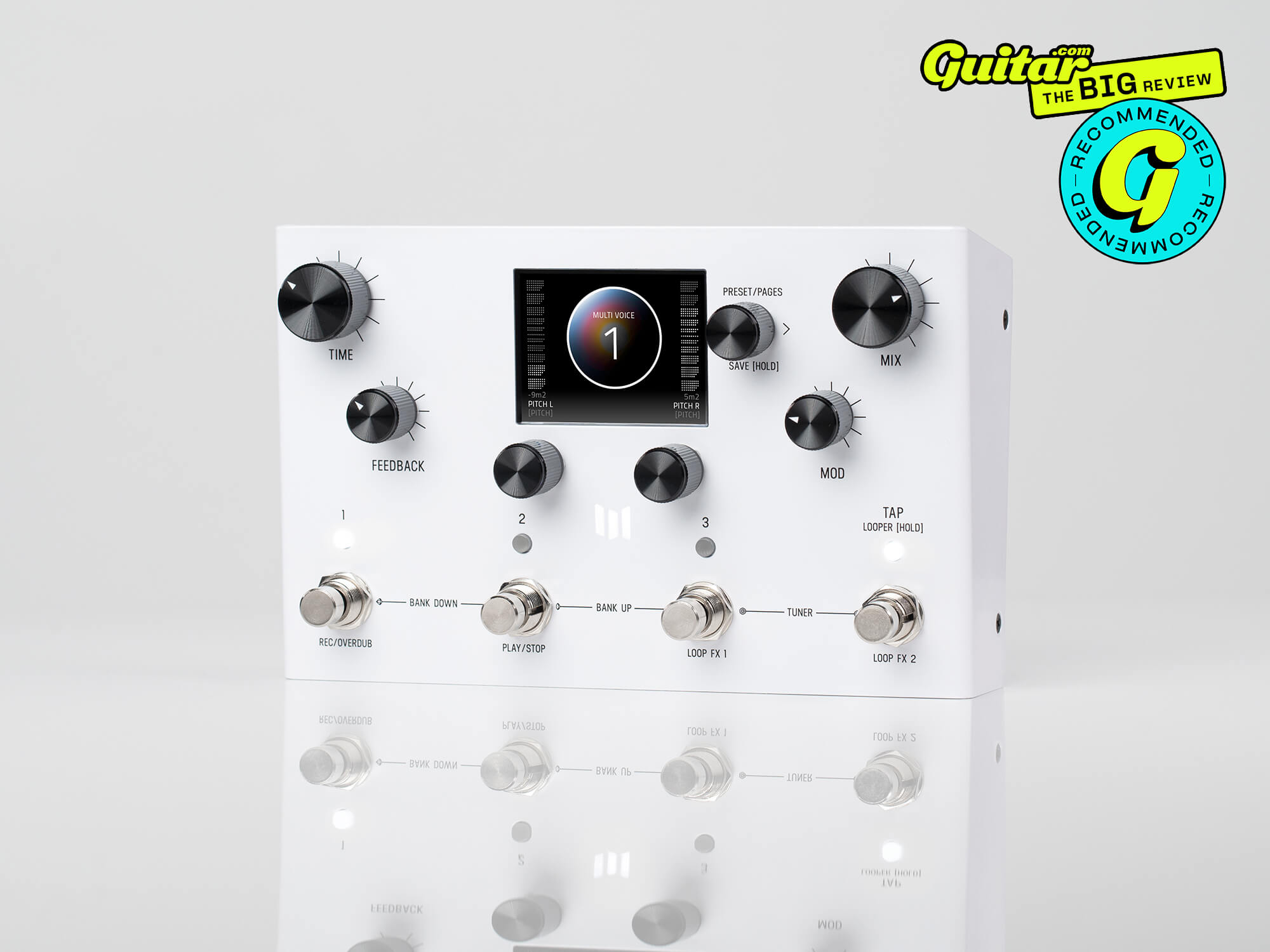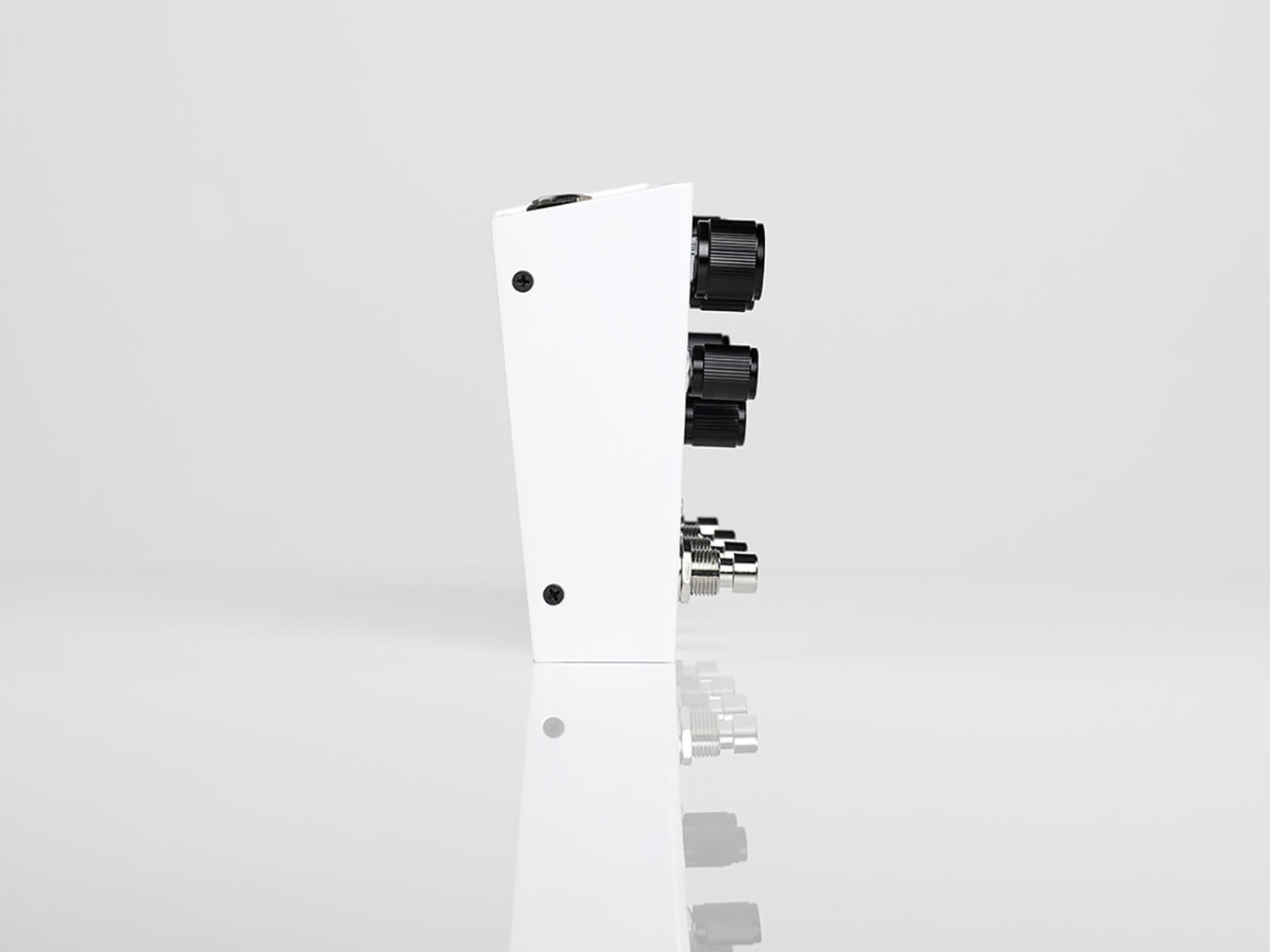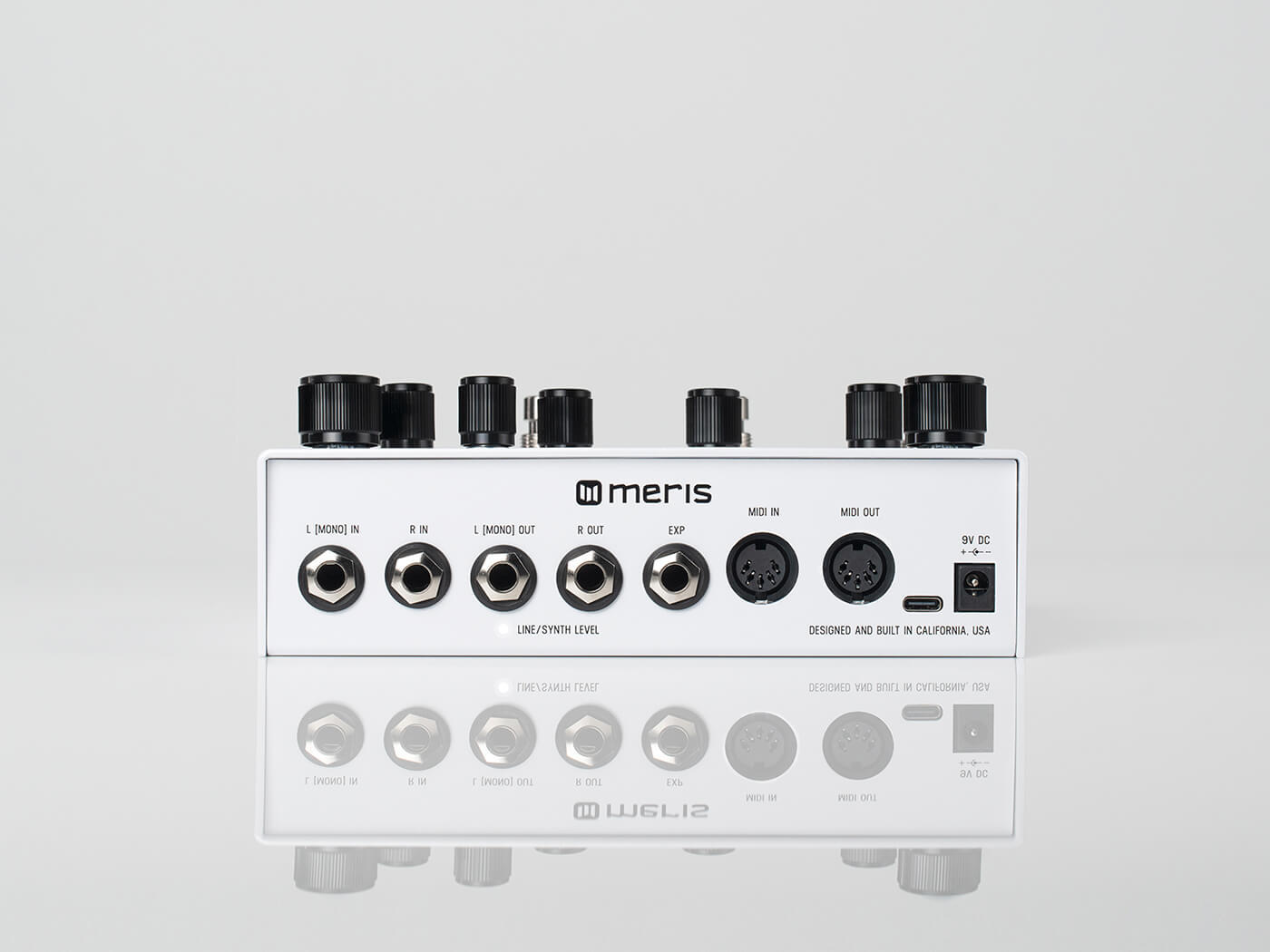Meris LVX review — a game-changing delay pedal that opens up a new sonic landscape
Meris’ big box delay pedal has been a phenomenon in 2023, but is it really as innovative and powerful as people say? Let’s find out…

Meris LVX
Review Overview
Our rating
9
Our verdict
$599/£689, meris.us
Since 2014, the Strymon TimeLine has been the cornerstone of my pedalboard. In that time, I’ve tried a plethora of other delay pedals, but none have really moved me enough to replace the TimeLine on my board.
Which is why I approached the Meris LVX with a mixture of curiosity and hesitance. On the one hand, it’s been nearly a decade since the TimeLine ensconced itself on my pedalboard – it would take something truly special to challenge that and many have tried and failed over the last few years to come at the champ with no success.
On the other hand, well, Meris describes the LVX as a “Modular Delay System”, which sounds pretty exciting for someone who is very into discovering new sounds at the ambient end of the spectrum.

Who are Meris?
And those bold claims are not idle given Meris’ pedigree – after all, co-founder Terry Burton was one of the original Strymon guys, while his partner in pedals Angelo Mazzocco is the latest in a long line of former Line 6 DSP guys to make waves in the boutique world (the most famous former Line 6 guys to go out on their own? Yep, Strymon).
Burton describes the LVX as “the delay system I’ve been dreaming of for a long, long time. I wanted something that broke the paradigm of pre-baked delay types in favour of modularity and freedom” and that should make delay hounds like me take notice.
Designed and built in California, Meris has always had a minimal and elegant design language that wouldn’t look out of place in an Apple Store. The LVX takes things to new levels with its super clean white with black knobs aesthetic, a full colour screen – it looks like a pedal that’s come from the future to redefine what we know about delay, and with good reason.

What does the Meris LVX do?
Built around a highly efficient ARM processor, the LVX offers 24-bit AD/DA w/32 bit floating point DSP, which translates to a whopping 2540mS of highly editable delay. It also incorporates processing elements from some of Meris’s other pedals – including the Polymoon, Hedra, Enzo, and Ottobit Jr.
As you would expect from a monster delay pedal we have MIDI control, up to 99 presets, dedicated expression pedal control, line/synth level stereo inputs, stereo outs, and a USB-C output for firmware updates – always welcome. There’s even a built-in tuner.
The LVX is easily one of the most minimal and elegant looking devices that wouldn’t be to out of place inside an Apple Store. Each knob serves a purpose and is labeled accordingly and the I/O’s you get on this thing are plenty. You get a Line/Synth level Left and Right In, a Left and Right out, Midi In and Out, and a huge quality of life feature, USB-C for firmware updates.
It’s all powered by a standard 9V centre-negative power supply, and it’s not even that thirsty for a high-end DSP pedal – requiring 280mA of current, which is less than the 300mA the TimeLine asks for. Enough talking about the thing, let’s plug in…

What does the Meris LVX sound like?
Who among us doesn’t want to know what 24‑bit/48kHz A‑D/D‑A conversion and 32‑bit floating‑point processing sounds like in a delay pedal? So I grab my trusty AVII Jazzmaster and plug it directly into the LVX and then into my trusty Matchless Nighthawk 15. And the answer to the above question, from the first strum, is very, very good indeed.
A lot of pedals talk about being ‘studio quality’ but the LVX genuinely could give the very best studio delay units a run for their money.
For those adverse to jumping into the deep end and creating patches from scratch, Meris has you covered with 81 presets that you can explore or modify at your own pace. Factory presets can be hit or miss but I find most of the ones here to be extremely musical and usable for a wide array of playing styles and genres.
If you’re feeling adventurous however, you can design your own patch preset – something that’s made dramatically more straightforward thanks to a simple and easy to understand user interface. At least it’s simple on the surface – there’s plenty of scope for menu diving here if you want it, but you don’t need to lose yourself in the guts of the thing to build something interesting and musical. It’s a tricky balance to strike but Meris has really done it well here.
The interface itself is separated into different modules that you can fine-tune to your heart’s content – Delay, Preamp, Dynamics, Filter and Modulation. Thanks to this, in minutes I’m able to create my first patch – a weird, woozy, lo-fi granular delay that sounds somewhere between the Edge meets Tycho.
It’s hard to fully explain everything that the LVX is capable of because there really is so much to play with here – the way the modules interact with each other is unlike anything I’ve played before, and it allows you to create some truly unique sounds that blur the boundaries of delay, modulation and filters in extremely inspiring ways.
Things get even better when I stick my Chase Bliss CXM-1978 into the chain – pushing things into much more ethereal territory and instantly driving me into bombastic post-rock soundscapes. Meanwhile the addition of Meris’ Mercury7 reverb and its more esoteric sounds takes things into an almost synth direction – pure Blade Runner and so much fun.
Should I buy a Meris LVX?
The LVX has quickly become one of the most hyped delay pedals in recent years, and in just a few hours of testing it becomes apparent just why so many guitarists have fallen in love with what it can do.
In many ways, describing the LVX as a ‘modular delay system’ as Meris does is over-simplifying the sonic potential of what it’s capable of, and that potential in itself justifies the heady price tag in my mind.
There’s no escaping that it is $600 though – a serious investment for even the most well-heeled pedal fiend. The question you have to ask yourself is do you need something this powerful and this experimental on your board?
For many players, the answer will likely be no – but for guitarists that genuinely love exploring new sounds and pushing themselves creatively, it could be the pedal that unlocks a huge new sonic landscape. As for me, well, that TimeLine isn’t looking as secure on my board as it once was…
Like this? Try these
- Strymon Timeline ($449)
- Boss DD500 ($399)
- Eventide H90 ($899)
